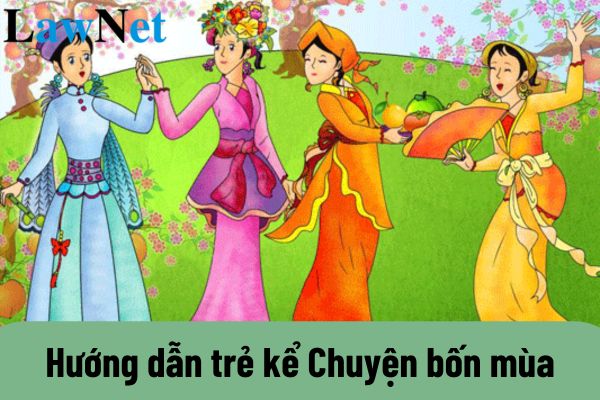What is the guidance for children to tell the story "Chuyện bốn mùa"? What is the age of students entering 2nd grade in Vietnam?
What is the guidance for children to tell the story "Chuyện bốn mùa"?
Guiding children to tell the story "Chuyện bốn mùa" is an activity that helps them develop language, imagination, and creativity. Through storytelling, children learn how to express their thoughts and feelings in a coherent and lively manner.
Guiding children to tell the story "Chuyện bốn mùa" is practiced in the 2nd-grade Vietnamese language curriculum.
Parents and teachers are invited to refer to the following guidance for children to tell the story "Chuyện bốn mùa":
|
Guidance for children to tell the story "Chuyện bốn mùa"
|
*Note: The information is for reference only./.

What is the guidance for children to tell the story "Chuyện bốn mùa"? What is the age of students entering 2nd grade in Vietnam? (Image from the Internet)
What is the age of students entering 2nd grade in Vietnam?
Under Article 33 of the Charter of Primary Schools issued along with Circular 28/2020/TT-BGDDT, the age for primary school students is regulated as follows:
Age of Primary School Students
1. The age for students starting first grade is 06 years old and is calculated by year. Children with disabilities, underdeveloped physically or intellectually, children in particularly disadvantaged areas, children from ethnic minorities, orphans with no one to rely on, children returning from abroad, children of foreigners studying or working in Vietnam can enroll in first grade at a higher age than prescribed but not exceeding 03 years. In cases where children enroll in first grade exceeding 03 years above the age as prescribed, the decision will be made by the Head of the Department of Education and Training.
....
Typically, the age of students entering 1st grade is 06. Thus, the age of students entering 2nd grade in Vietnam is 07
However, if 1st-grade students enter school at an age higher than the regulatory age by 3 years or more in some cases, the age of students entering 2nd grade will be calculated by the year based on the previous entry age.
Who selects the 2nd-grade Vietnamese language textbooks?
Textbooks of general education
1. Textbooks of general education are regulated as follows:
a) Textbooks must implement programmes of general education, concretizing the requirements on educational objectives and contents, on students’ quality and capacity as defined in programmes of general education; direct teaching methods and methods of assessing and evaluating education quality; contents and formats of textbooks shall not carry prejudices based on ethnicity, religion, profession, gender, age and social status; textbooks may be in the printed, Braille or electronic forms.
b) Each subject shall have one or several textbooks; implement private sector involvement in textbook compilation; textbook publication shall be in compliance with the law;
c) Provincial People’s Committees shall decide selection of textbooks for consistent use in institutions of general education in their localities as regulated by the Minister of Education and Training.
d) Local educational materials shall be designed by provincial People’s Committees to meet the needs and characteristics of their localities, be appraised by provincial review councils for appraising and approved by the Minister of Education and Training.
...
Article 18 of the Charter of Primary Schools issued under Circular 28/2020/TT-BGDDT also specifies the selection and use of textbooks in teaching and learning in primary schools.
Thus, under the regulations of the Minister of Education and Training, the Provincial People's Committee decides the selection of the 2nd-grade Vietnamese language textbooks to be used stably in general education institutions in the province.

